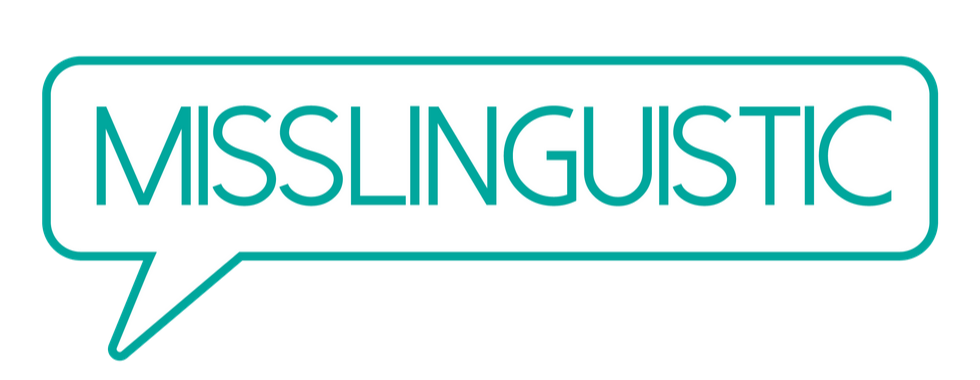I get this question a lot: “You mean, there is more than one sign language?”
And don’t feel bad, before I studied linguistics and started doing research on Nicaraguan Sign Language, I hadn’t thought about sign languages much either. I had plenty of wrong ideas about how they worked. But yes, to answer the question, there are actually many sign languages out there in the world, sometimes even more than one to a country (have you heard of Martha’s Vineyard Sign Language?) And each sign language is unique. They are as different from each other as are spoken languages.
Skeptical? If you think about it for a moment, you’ll realize that you are probably holding two competing misconceptions in your head that cannot be true at the same time:
- A country’s sign language is the same as that country’s spoken language, just on the hands.
- Every country’s sign language is the same.
In fact, both of these statements are false, but in any case, they couldn’t have both been true at the same time, could they have? Think about it.
In reality, sign languages, like any other languages, have a mind of their own. Even when sign languages have been created artificially by well-meaning educators (not always the case) they soon morph into something quite different – languages with their own grammar rules, lexicons, and untranslateables, just like any spoken language. Remember, languages have to keep changing, or else they die. We don’t know why this is the case, but we do know that this is a fact.
(And in fact, the same thing happened to Esperanto. A lovely language, and I wish it the best, but it was never really well-equipped to be a universal language anyway, sorry guys, universal for Europeans maybe?)
So, where do sign languages come from, when they’re not man-made? Often, sign languages are created by the Deaf communities themselves in an organic process that starts with iconic gesturing, and that little by little starts to incorporate grammar and become more standardized, until it is just as complex and effective as any other world language.
But as with spoken languages, sign languages are heavily influenced by the languages they come in contact with, so yes, American Sign Language borrows a lot from English and is heavily influenced by English.
As is British Sign Language. However, American Sign Language and British Sign Language are two very different sign languages, mutually unintelligible, with very different phonological structures (rules for the shape and movements of the hands, arm, and face).
Still confused? Don’t feel bad. There are two more reasons why people not exposed to sign languages misunderstand how they work.
Sign Language Alphabets: In general, non-linguists are usually pretty confused about the difference between a language and an alphabet, since they don’t usually have to think much about the distinction. To put this as concisely as possible: in English, we use the Roman alphabet, right? This alphabet is also used by French, Turkish and Vietnamese, along with many more languages. That doesn’t mean that Turks write in English or in Roman, though. The alphabet is just a code they use to represent their own languages. They write using the Roman alphabet, and that alphabet is used to represent the sounds of Turkish.
A manual (on the hands) version of that same Roman alphabet is also used by American Sign Language – in order to better communicate with English speakers who don’t know how to sign. Fingerspelling, as it is called, is not the same as the sign language. It is just an alphabet used by the sign language. It is like how we call “j” a “jay” in English, but a “hota” in Spanish and a “zhee” in French.
Some of these fingerspelled words have been adopted by ASL now as signs in their own right – for example the word for “fun”, which is spelled out instead of using its own sign. However for the most part, the fingerspelled ASL alphabet that Americans learned in schools is actually a phenomenon that is very distinct from ASL, and really serves mostly as a bridge to the hearing world.
Mouthing in Sign Languages: When signers sign, they often move their mouth as if they are speaking at the same time. This is not because they’re using the spoken language simultaneously. It is because in many sign languages, the face is an active part of the language, contributing to grammar and also to distinction between certain words (I like to think of it sort of like tones in Chinese – it is an extra layer on top of the word that contributes to changes in meaning). Mouth shape in ASL will often look like the mouth shape of the English word – once again, because ASL is in daily contact with English and has thus borrowed a lot!
Phew. Is it starting to make sense? Now that you know WHY there are so many sign languages, let me just blow your mind a little and explain that sign language FAMILIES also exist, and are in general not the same as spoken language families. Relationships between sign languages are usually more dependent on which Deaf people (or educators working with Deaf communities) got around, and where they got around to. So, American Sign Language is actually most closely related to French Sign Language. This is thanks to an American Yale graduate named Thomas Gallaudet, who travelled to Europe to learn more about sign language education. Gallaudet convinced a Deaf French educator, Laurent Clerc, to come back with him to the US, where the two founded the American School for the Deaf in Connecticut. As Martha’s Vineyard Sign Language and a few other homegrown sign languages mixed with French Sign Language, the language we now know as ASL was born.
And another language that is closely related to these two languages…is Malaysian Sign Language! And now that you understand how sign languages work, I can tell you all about it!
Thanks to a tip from an Instagram friend (@thecuriouslinguist) last week I went to visit the first Deaf-run Starbucks in the world (the inspiration for the one in Washington DC!) The café is located in the hip Bangsar neighborhood of Kuala Lumpur, Malaysia.
The Deaf staff (six of them in all) were so hospitable and friendly. Whenever the flow of customers slowed down, they took some time to chat with me in a mix of ASL/Malaysian Sign Language and to teach me some of their signs.
Bahasa Isyarat Malaysia (BIM) is from the same language family as ASL and French Sign Language, so luckily it wasn’t too hard to communicate.
Here’s the history of BIM: Before it existed, the Deaf in Malaysia primarily used Penang Sign Language, Selangor Sign Language, or Chinese Sign Language if they had Chinese background, although these languages were not in standardized use, as British-built Deaf schools discouraged signing and heavily promoted oralism (which we now know to be detrimental to language development, although the practice is still pervasive). But in 1976, an American named Frances Parsons traveled the world trying to promote the use of sign languages in schools, and met with a young minister of education named Mahathir bin Mohamed. The legend goes that he was convinced in under 45 minutes, immediately announced new legislation to promote signing in schools, and sent away for sign language training materials from the US. This is why the sign language used in Malaysia today is so similar to American Sign Language (instead of British Sign Language, which is from a very different sign family).
By the way – that minister of education is now the Prime Minister of Malaysia.
(Yes, he is 93 years old.)







